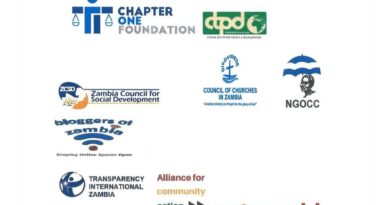Enhancing Financial Inclusion through Micro-insurance: Insights into the Insurance Landscape in Zambia
Zambia, a landlocked country with a predominantly rural population, faces challenges in providing financial services to its citizens, especially those in remote areas. To address this issue, the Zambian Financial Sector Deepening Limited (FSD Zambia) and other stakeholders have collaborated to enhance financial inclusion, with a particular focus on micro-insurance. This article provides an overview of the micro-insurance market in Zambia, highlighting its evolution, challenges, opportunities, and the role of key players in promoting inclusive insurance.
Insurance Industry in Zambia
Although the insurance industry in Zambia has experienced growth and innovation, insurance penetration and usage rates remain relatively low. Barriers such as lack of awareness, high premium rates, and limited access to insurance services, especially in remote areas, hinder the widespread use of insurance. Efforts are being made by insurance service providers and their partners to introduce insurance to the mass market and promote consumer education for inclusive growth.
Analysis of the Insurance Market
Micro-insurance Market Outreach
Since 2009, micro-insurance tailored for low-income individuals has gained traction in Zambia. The market has witnessed significant growth in terms of coverage, with the number of lives covered increasing from 2.4 million in 2018 to over 3.3 million in 2020, representing a 37.5% growth. This expansion can be attributed to new products and increased outreach efforts.
Business Engagement
Out of the 30 insurance companies in Zambia, only 11 actively participate in micro-insurance, while the remaining 19 primarily focus on serving the middle to high-income market. The challenges faced by organizations in effectively participating in micro-insurance include perceptions of high risk, lack of a business case, and insufficient buy-in from company management.
Product Portfolio and Distribution Channels
The micro-insurance market in Zambia offers a range of products, including credit life, agriculture (weather index, area yield index), funeral, hospital cash plans, personal accident, travel, and property insurance. Funeral and weather index insurance dominate the market as compulsory products, constituting a significant portion of lives covered. Distribution channels include government schemes, associations, brokers, employers, microfinance institutions, mobile network operators, and retail stores.
Business Case and Viability
The financial viability of micro-insurance in Zambia depends on factors such as income, claims, and administration costs. Gross written premiums and total claims paid have shown positive trends, but further analysis is needed to understand the profitability and sustainability of micro-insurance products.
Enabling Environment and Support Needs
The Micro-insurance Technical Advisory Group (TAG) and the Pensions and Insurance Authority (PIA) continue to play crucial roles in supporting the development of micro-insurance in Zambia. Insurance service providers have identified various support needs, including access to actuarial data for product development, identification of distribution channels, availability of investment capital, consumer education, technological infrastructure, training for insurance professionals, and reinsurance options for high-risk micro-insurance.
Recommendations
Based on the perspectives of insurance service providers, key recommendations to promote micro-insurance in Zambia include providing information on returns on investment, business viability drivers, and industry trends. Support is also needed for product promotion, pricing, development of high-value products, business case development, claims management, and specific product lines like agriculture and healthcare.
While the micro-insurance market in Zambia has shown promising growth, there are still challenges to overcome. By addressing barriers to access, improving financial literacy, and fostering collaboration among stakeholders, Zambia can enhance financial inclusion and ensure the availability of affordable insurance products for all its citizens.
The author is Octagon Zambia Insurance Brokers principal officer
Note: This article is based on the Landscape Survey conducted by FSD Zambia, in partnership with the Micro-insurance Technical Advisory Group (TAG), the Pensions and Insurance Authority (PIA), and insurance service providers.



